VietNamNet respectfully introduces the full text of the thematic report "Policies and solutions on institutions, promoting the development of science , technology, innovation and national digital transformation" by National Assembly Chairman Tran Thanh Man on January 13, 2025.
Dear Comrade To Lam , General Secretary of the Party Central Committee, Head of the Central Steering Committee on Science, Technology, Innovation and National Digital Transformation Development,
Dear leaders and former leaders of the Party, State and Vietnam Fatherland Front ,
Dear delegates attending at the connection points nationwide,
According to the Conference program, assigned by General Secretary To Lam and the Conference Organizing Committee, I reported on the topic "Policies and solutions on institutions, promoting the development of science, technology, innovation and national digital transformation".
Part 1: Party and State policies on science, technology, innovation and digital transformation.
The Resolution of the 13th National Congress of the Party has identified important contents that guide the country's development based on science, technology and innovation. Resolution No. 52 dated September 27, 2019 of the Politburo; Resolution No. 29 dated November 17, 2022 of the 6th Conference of the 13th Party Central Committee also identified the core content of the country's industrialization and modernization in the 2021-2030 period as promoting the strong application of science - technology, innovation, creating breakthroughs in productivity, quality, efficiency, and competitiveness of industries, fields and the whole economy; implementing comprehensive, substantive, effective and sustainable digital transformation...
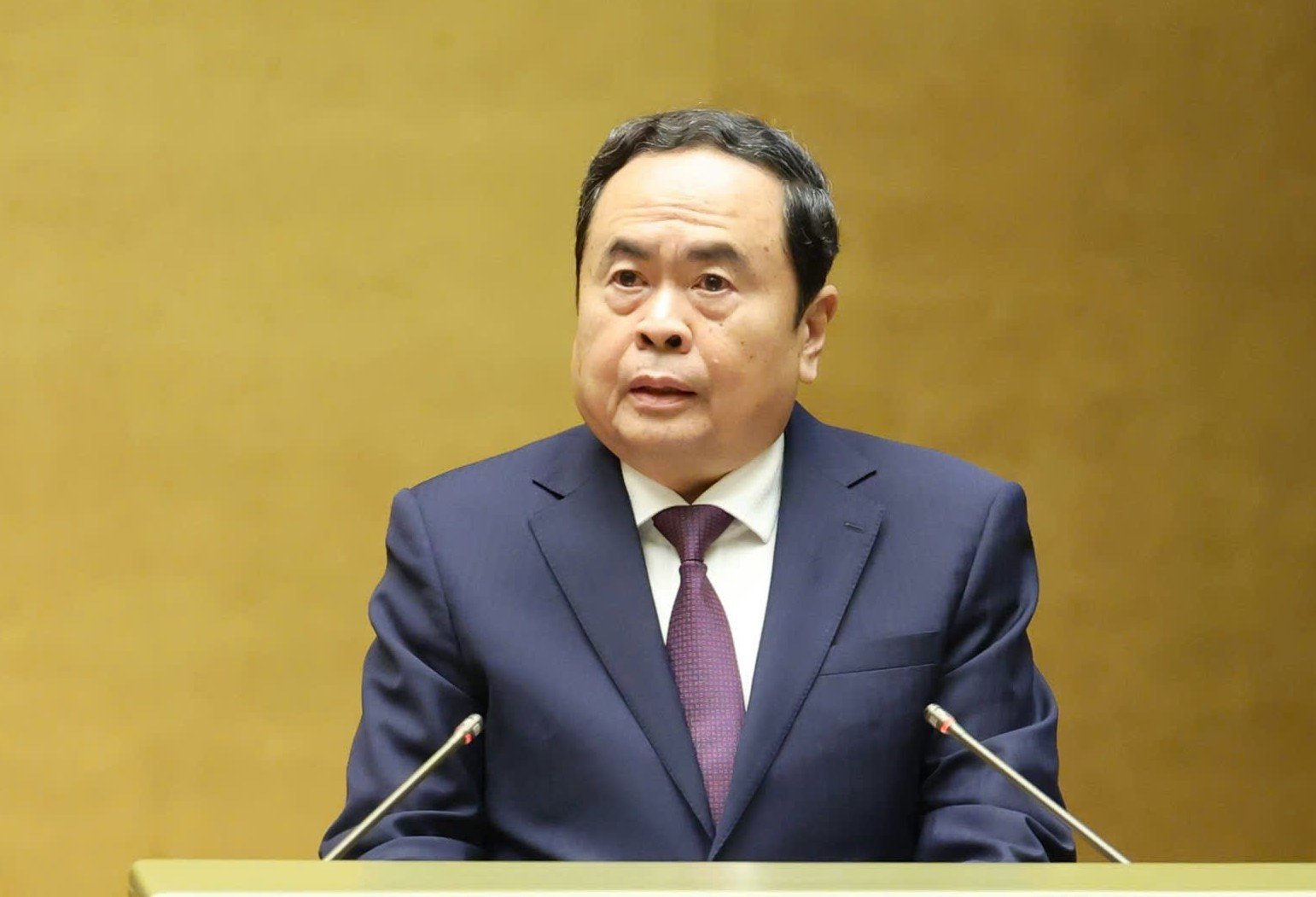
In addition, the legal system on science, technology, and innovation has 4 Laws directly related to the field of science and technology, including: Law on Science and Technology, Law on High Technology, Law on Technology Transfer, Law on Intellectual Property; in addition, there are 12 other laws, 42 decrees, and 131 other related circulars. The legal system on digital transformation has 08 directly related laws and many other related legal documents; 4 resolutions of the Government and more than 160 decrees, decisions, and circulars guiding implementation. Since the beginning of the 15th National Assembly term, the National Assembly has passed 8 Laws related to this content.
In particular, 29 laws and 41 resolutions passed by the National Assembly at the Seventh and Eighth Sessions have resolved many urgent practical issues, including laws regulating the creation of digital databases; management methods, mechanisms, and specific incentive policies related to the application of science, technology, and digital transformation; allowing the implementation of a controlled testing mechanism for research activities to produce products, services, and new types of business.
Part 2: Advantages, strengths, limitations and practical difficulties of the current legal system in the fields of science, technology, innovation and national digital transformation.
Advantages and disadvantages: The current legal system also has many mechanisms and policies to encourage and provide incentives for investment, finance, human resource development, and promotion of scientific and technological activities, innovation and digital transformation. This is clearly shown in the Law on Science and Technology 2013; Law on Support for Small and Medium Enterprises 2017; Law on Education 2019; Law on Investment 2020; Law on Data 2024.
However, the legal system on science, technology and national digital transformation still has the following basic limitations:
Firstly, there is a lack of synchronization and unity, leading to some incentive and promotion mechanisms in these areas not being effective.
For example, the Law on Science and Technology 2013 stipulates a fund mechanism; however, in reality, the fund mechanism cannot be implemented because the Law on State Budget 2002 has not yet provided a uniform regulation and has not been amended in a timely manner. It was not until 2015 that the Law on State Budget amended the regulations on state budget expenditure estimates for the field of science and technology to be implemented in accordance with the provisions of relevant laws, which means that the Law on State Budget accepts expenditure estimates for the field of science and technology to be implemented in accordance with the Law on Science and Technology 2013.
Second: the investment and financial mechanism for science, technology and innovation is not really suitable, does not encourage and attract investment from society. I raise the following 8 issues:
1. The total investment budget of the whole society for science, technology and innovation is still low. The mobilization, allocation and use of resources are still limited and ineffective; investment expenditure from the state budget for this field tends to decrease; in the period 2016-2023, it decreased from 1.29% (in 2016) to 0.8% (in 2023). One of the reasons is that ministries, branches and localities have not really paid attention and have not developed tasks that meet the principles and criteria for capital allocation. Some localities do not allocate capital or some localities allocate very low capital for this field.
2. The allocation of investment capital for science and technology activities is still overlapping and scattered, not focused on priority areas. Investment funding in recent years has not reached the minimum rate of 2% of total state budget expenditure according to Resolution No. 20-NQ/TW and the Law on Science and Technology 2013.
3. Every year, the budget allocated to most central ministries, branches and localities is not fully disbursed. One of the reasons is that the process and procedures are still cumbersome, for example: the development of proposals for science and technology tasks must be implemented according to a pre-existing plan, by the time they are approved, the urgency is no longer there, or when the budget is allocated for implementation, the unit price has changed a lot, leading to slow implementation, incomplete spending, and inefficiency.
4. Current regulations on budgeting and budgeting for scientific and technological tasks using the State budget are not suitable to the characteristics of scientific and technological activities and do not meet the needs and aspirations of the scientific community.
5. The financial management mechanism for scientific and technological organizations, especially public service organizations, is not suitable, leading to difficulties and obstacles in autonomy in planning, finance, human resources and international cooperation, especially attracting highly qualified human resources in research.
National Assembly Chairman Tran Thanh Man presented a thematic report on “Policies and solutions on institutions, promoting the development of science, technology, innovation and national digital transformation”. Photo: Lam Hien
6. The regulations on encouraging the establishment and use of funds are not attractive enough and do not meet the needs of enterprises; the number of enterprises establishing funds is not large and the unused balance of the fund is still large. The process of allocating funds to science and technology funds at all levels has not been implemented because some ministries, branches and localities have not yet established funds.
7. The mechanism of spending on final products of scientific and technological tasks has been implemented, but is not popular. Currently, spending and payment are still subject to simultaneous regulation by the Accounting Law, the State Budget Law and the Bidding Law.
8. Difficulties and obstacles in the management and use of public assets in the handling of assets formed from scientific and technological tasks using state capital. The national high-tech venture capital fund has been stipulated in the 2008 Law on High Technology. However, these regulations have not been detailed or guided for implementation.
Third: The investment and financial mechanisms for implementing digital transformation activities are still difficult and have not been resolved promptly; the allocation of financial resources for tasks, projects and projects on a national scale is still slow and implementation is complicated and time-consuming.
Part 3: Tasks, key solutions, institutional breakthroughs to promote scientific and technological development, innovation and digital transformation.
Resolution 57 sets out 7 tasks and solutions. Through review, it is shown that with more than 100 specific tasks and solutions, of which 16 tasks require research and development of mechanisms and policies, which can be considered very new, such as: developing the Artificial Intelligence and Internet of Things industries; investing in and building data centers and cloud computing; forming storage infrastructure that meets international standards and green standards; building large databases, forming Vietnam's big data industry; building a number of schools and advanced training centers specializing in artificial intelligence... On that basis, we will focus on the following key tasks and solutions:
1. Raising awareness and making breakthroughs in changing thinking about the position and role of science, technology, innovation, and digital transformation. On January 10, 2025, the Party Delegation of the National Assembly issued Action Plan No. 3260 to implement the Resolution, which clearly defines goals, targets, assigns responsibilities, specific progress, and organizes implementation with the spirit of urgency and the highest determination; clearly defines the responsibilities of leaders, cadres, civil servants, public employees, and workers; evaluates the effectiveness of digital transformation activities, application of scientific and technological achievements in performing functions and tasks; promotes the spirit of innovation, creativity, pioneering, daring to think, daring to do, daring to take responsibility; emulation, timely rewards, and commendation.
2. Strongly innovate thinking, methods, and procedures in law-making activities: laws must be concise and clear, only regulating issues under the authority of the National Assembly; do not legalize the contents of circulars and decrees. Strengthen decentralization, delegation of power, and administrative reform; strongly shift from management-oriented laws to harmoniously combining effective management with development creation, encouraging innovation, and resolutely abandoning the mindset of "if you can't manage, ban". For specific issues that are still in the process of being mobilized and not yet stable, the law only stipulates the framework and assigns the Government to regulate in detail, ensuring flexibility in direction and operation, promptly responding to practical requirements.
In particular, at the recent Government's 2024 summary conference, General Secretary To Lam continued to emphasize: The legal system needs to be improved so that each content is only regulated in a single law. Management based on results, it is necessary to eliminate the mechanism of asking for and subsidizing; innovate budget allocation based on output results, shifting from pre-control to post-control. The scientific management mechanism must create motivation for innovation and creativity like the spirit of "contract 10" in agriculture.
In addition, continue to allow piloting for new practical issues; research and prescribe appropriate pilot mechanisms and controlled testing mechanisms; research and prescribe exemptions from liability in cases of testing new technologies and new business models.
3. Organize the completion of laws on science, technology development, innovation and digital transformation
Coordinate the organization of review, preliminary review, final review, and assessment of the implementation of relevant policies and laws, correctly and fully identify difficulties, obstacles, bottlenecks, and barriers to remove and eliminate; unify the perception of the task of "turning institutions into competitive advantages", in which it is necessary to meet specific principles, criteria, goals, and targets; clearly demonstrate the level of outstanding incentives and incentives; ensure consistency, unity, stability, publicity, transparency, simplicity, convenience, and reduce compliance costs. From the beginning of the 15th National Assembly term to now, through initial review, it shows that the law on science, technology, and innovation still has 2 Decrees that have not been amended or replaced, 1 Circular that has not been issued; the law on digital transformation also has 4 Decrees and 1 Circular that have not been issued according to schedule.
On the basis of the Government's submission and implementation of the Law and Ordinance Development Program, the National Assembly will comment and consider approving draft Laws in 6 key areas: On science, technology, innovation, and digital technology: complete 8 Laws. On investment and finance: review and complete 12 Laws. On organizational structure, cadres, civil servants, education, training, and human resource development: review, amend, and complete 11 Laws. On enterprises and trade: review and complete 3 Laws. On ensuring security and safety in cyberspace and the digital environment, review and complete 3 Laws. On digital transformation, application of science, technology, and innovation: complete the legal basis to promote the construction and operation of the Digital National Assembly, Digital Government, and Digital Government. In addition, continue to review and develop new relevant legal documents.
4. In that spirit, the National Assembly, the National Assembly Standing Committee, and the National Assembly agencies will coordinate with the Government and the Government agencies to lead, direct, and organize the review of the relevant legal system; establish adequate, timely, and synchronous institutions in accordance with the requirements of Resolution 57. Organize the assignment of monitoring, guidance, urging, inspection, supervision, and reporting on the implementation of the Resolution; clearly indicate the results achieved, the work that has not been done, the work that has not met the requirements, solutions to overcome them, and individualize responsibilities. In the immediate future, it is necessary to urgently coordinate to prepare and actively implement the Law and Ordinance Development Program for 2025.
5. Propose the Party Central Committee, the Government, ministries and branches: focus on organizing the assessment, summarizing the implementation, reviewing, proposing amendments, supplements, and developing new laws in the fields of science, technology, innovation, and digital transformation to ensure quality and progress requirements according to regulations. Urge the timely and complete development and promulgation of documents guiding the implementation of the Law.
Propose that People's Councils at all levels: based on practical situations, coordinate to issue mechanisms and policies within their authority to encourage and promote the development of scientific and technological research, innovation, digital transformation, improve the efficiency, effectiveness and efficiency of state agencies, enterprises, organizations and individuals in the area. In addition, on the basis of instructions from the National Assembly Standing Committee, organize supervision of implementation.
Dear delegates,
The country's reality is posing urgent issues that need to be resolved. The people are waiting and expecting the decisions of the Party and the State. In that spirit, the National Assembly will continue to strongly innovate, improve the quality and efficiency of operations, as stated by General Secretary To Lam at the Conference summarizing the work of 2024 and deploying the tasks of 2025 of the Government and local authorities: at present, the country has enough position and strength, enough will and determination to enter the era of rising up to develop richly and prosperously for the nation; every opportunity that comes to us must be seized promptly, because if we let it slip away, we will be guilty to history and to the people.
Dear delegates, within the time allowed, I have completed the report on the topic "Policies and solutions on institutions, promoting the development of science, technology, innovation and national digital transformation"; I sincerely thank you, comrades and delegates, for your attention.
I wish General Secretary To Lam, leaders and former leaders of the Party, State, Vietnam Fatherland Front and all delegates good health, happiness and success.
Thank you very much!
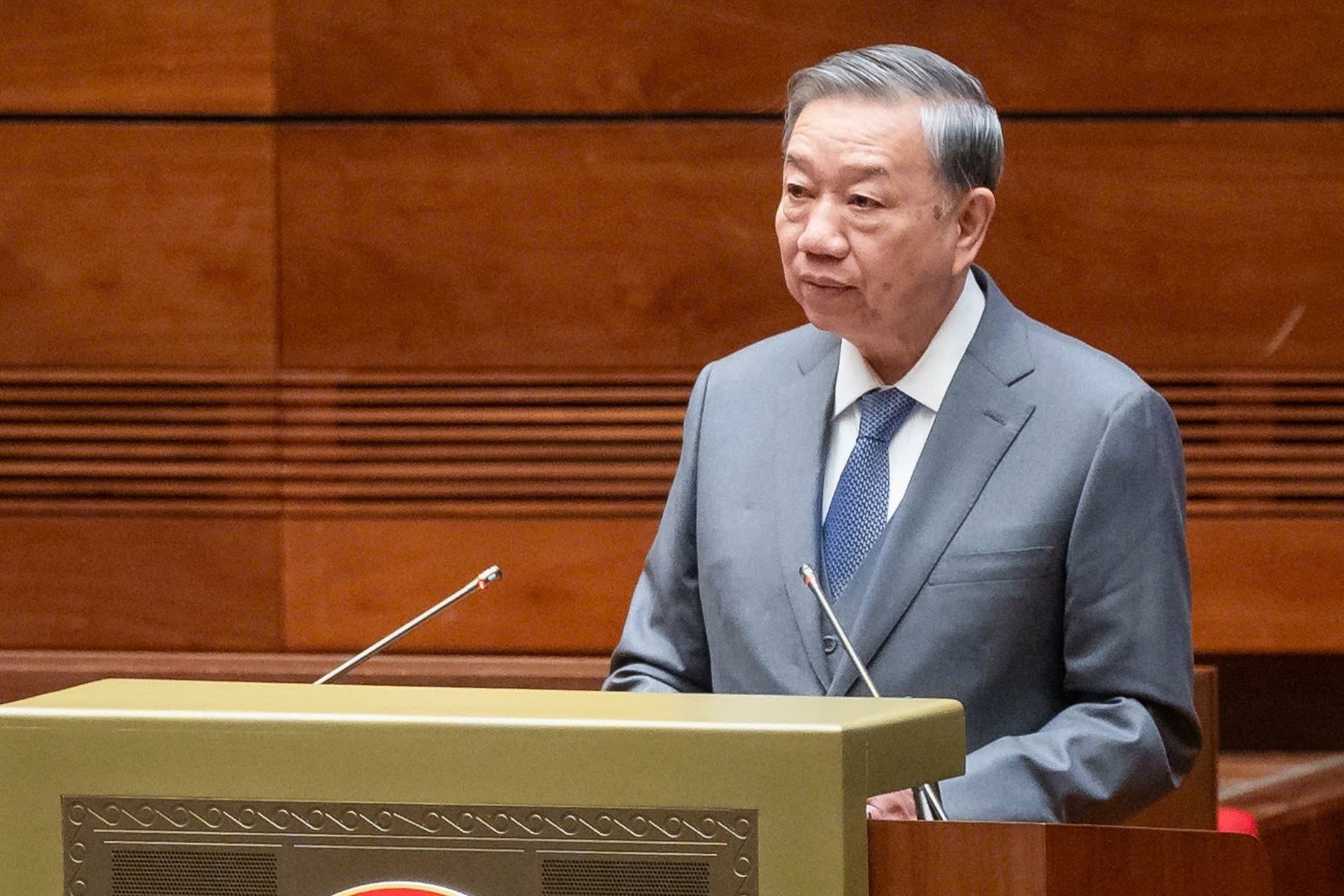
General Secretary: Immediately eliminate the situation of 'laying carpets above, scattering nails below'
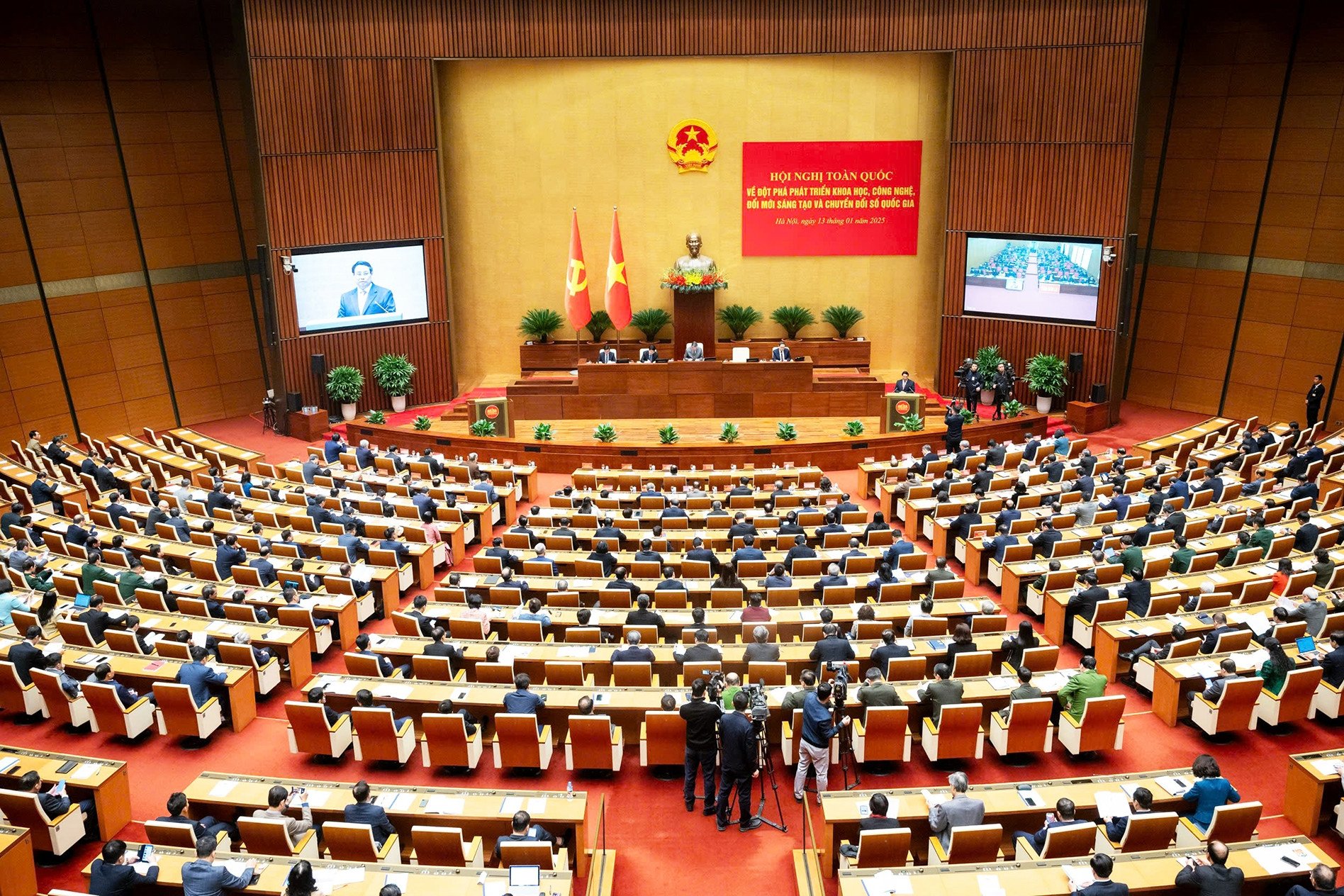
Decision to help Vietnam leap forward in science and technology
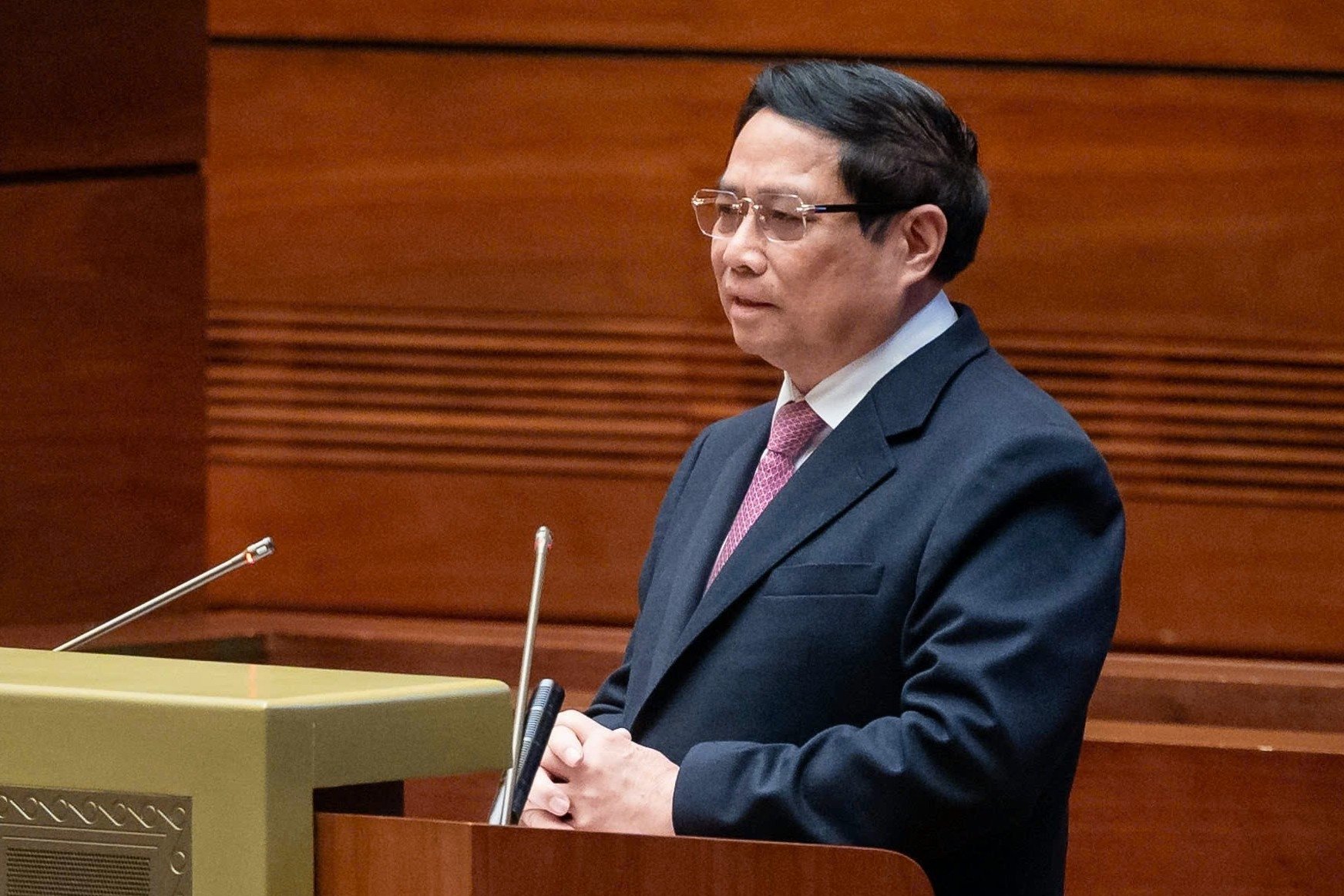
Resolution 57 is the guideline for developing a prosperous country in the new era.
Source: https://vietnamnet.vn/toan-van-phat-bieu-cua-chu-tich-quoc-hoi-ve-nghi-quyet-57-2362860.html





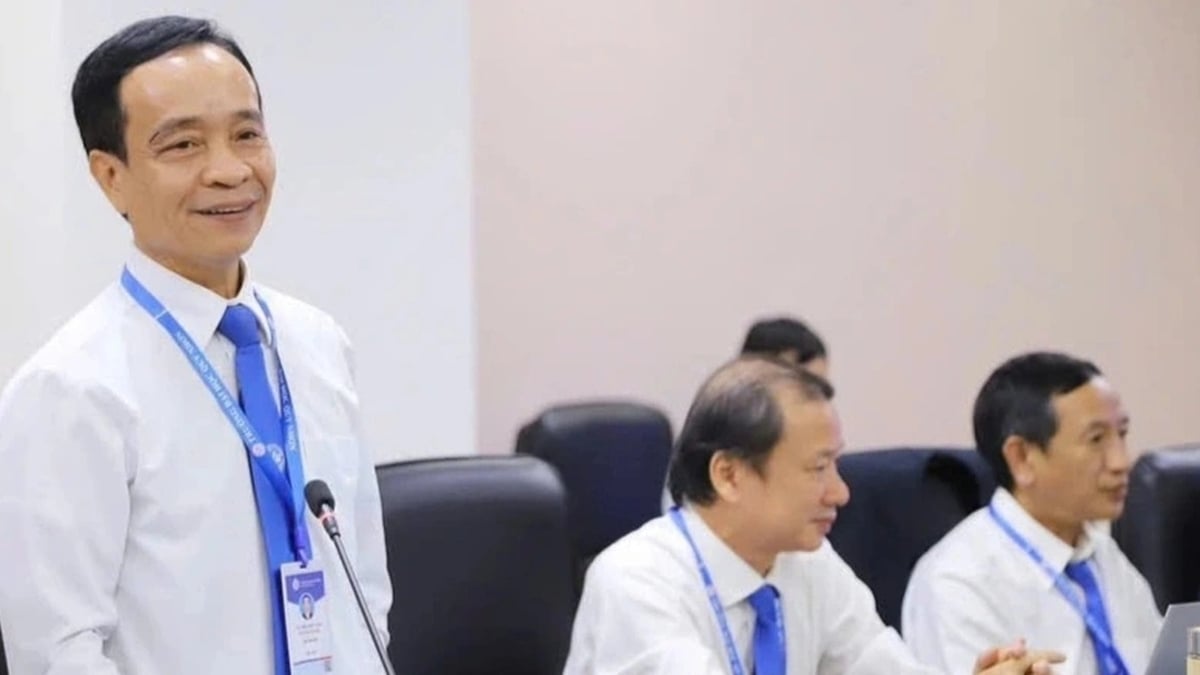













































![[Maritime News] More than 80% of global container shipping capacity is in the hands of MSC and major shipping alliances](https://vphoto.vietnam.vn/thumb/402x226/vietnam/resource/IMAGE/2025/7/16/6b4d586c984b4cbf8c5680352b9eaeb0)













































Comment (0)